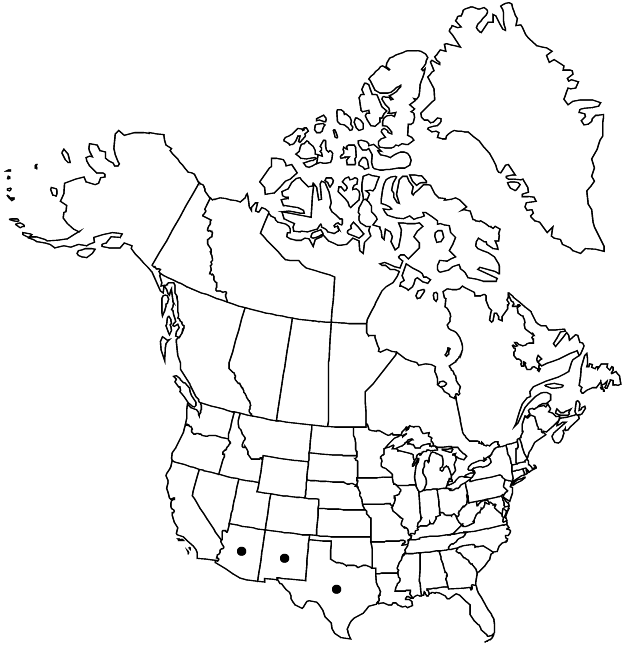Silene laciniata subsp. greggii
Revis. N. Amer. Silene, 56. 1947.
Common names: Gregg’s Mexican pink or campion
Basionym: Silene greggii A. Gray Smithsonian Contr. Knowl. 5(6): 17. 1853
Synonyms: Melandrium laciniatum var. greggii (A. Gray) Rohrbach Silene laciniata var. greggii (A. Gray) S. Watson
Stems erect, much-branched distally. Leaves: proximal blades oblanceolate, often broadly so, 3–6(–8) cm × 15–30 mm, scabrid-pubescent on both surfaces; distal short-petiolate, blade lanceolate to elliptic, reduced, 1–4 cm × 3–10 mm, apex acute. Inflorescences well developed, open, 3–5-flowered cymes, bracteate; bracts lanceolate, 6–20 mm, apex acute. Calyces broadly tubular, 17–20 × 4–5 mm in flower, broadening to 6–9 mm in fruit, less than 1/2 as broad as long, narrowed to base and ± umbilicate. 2n = 48.
Phenology: Flowering in summer–early fall.
Habitat: Dry oak, pine, and juniper woodlands
Elevation: 1600-3000 m
Distribution
Loading map...

Ariz., N.Mex., Tex., Mexico.
Discussion
Selected References
None.
Lower Taxa
None.